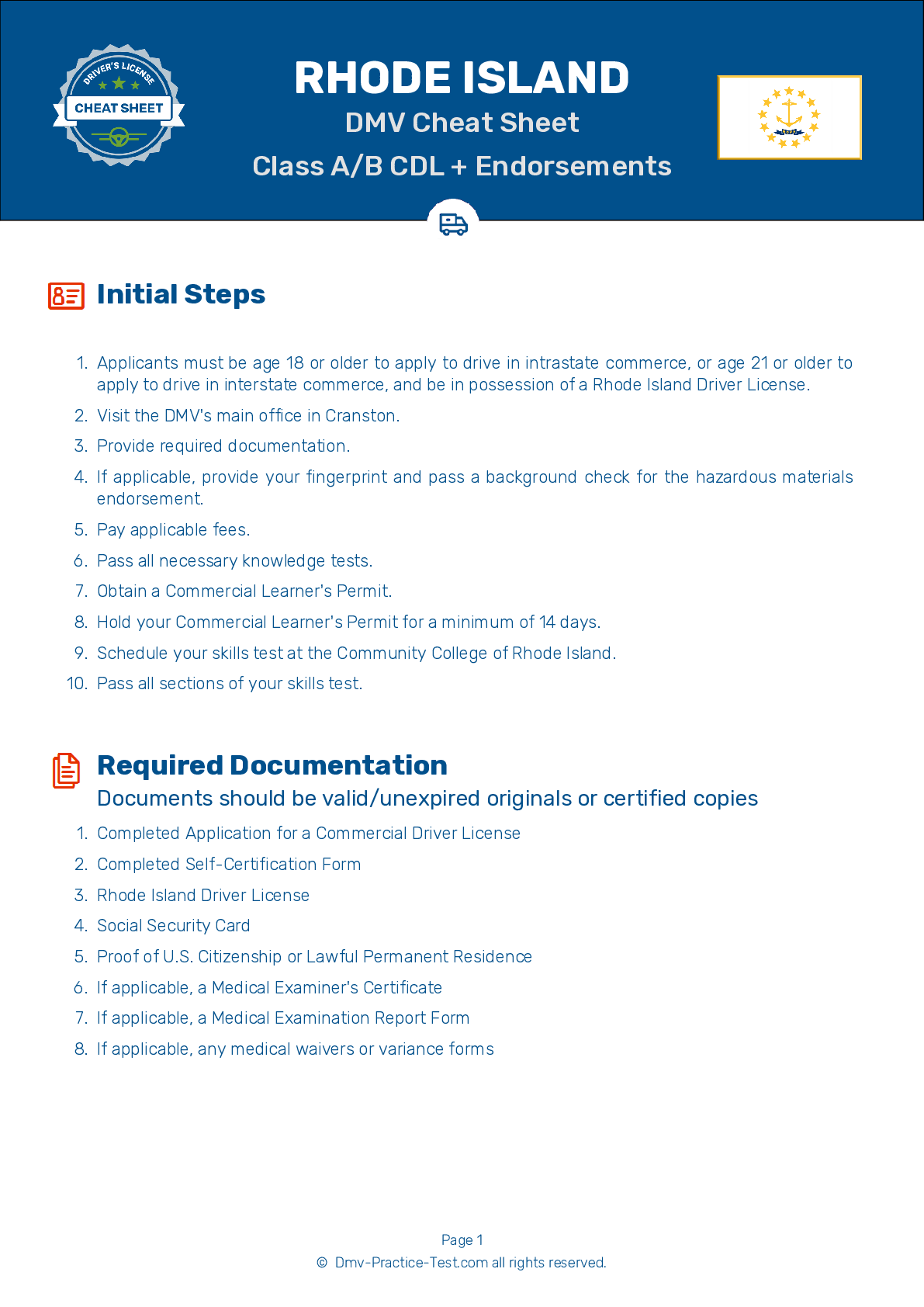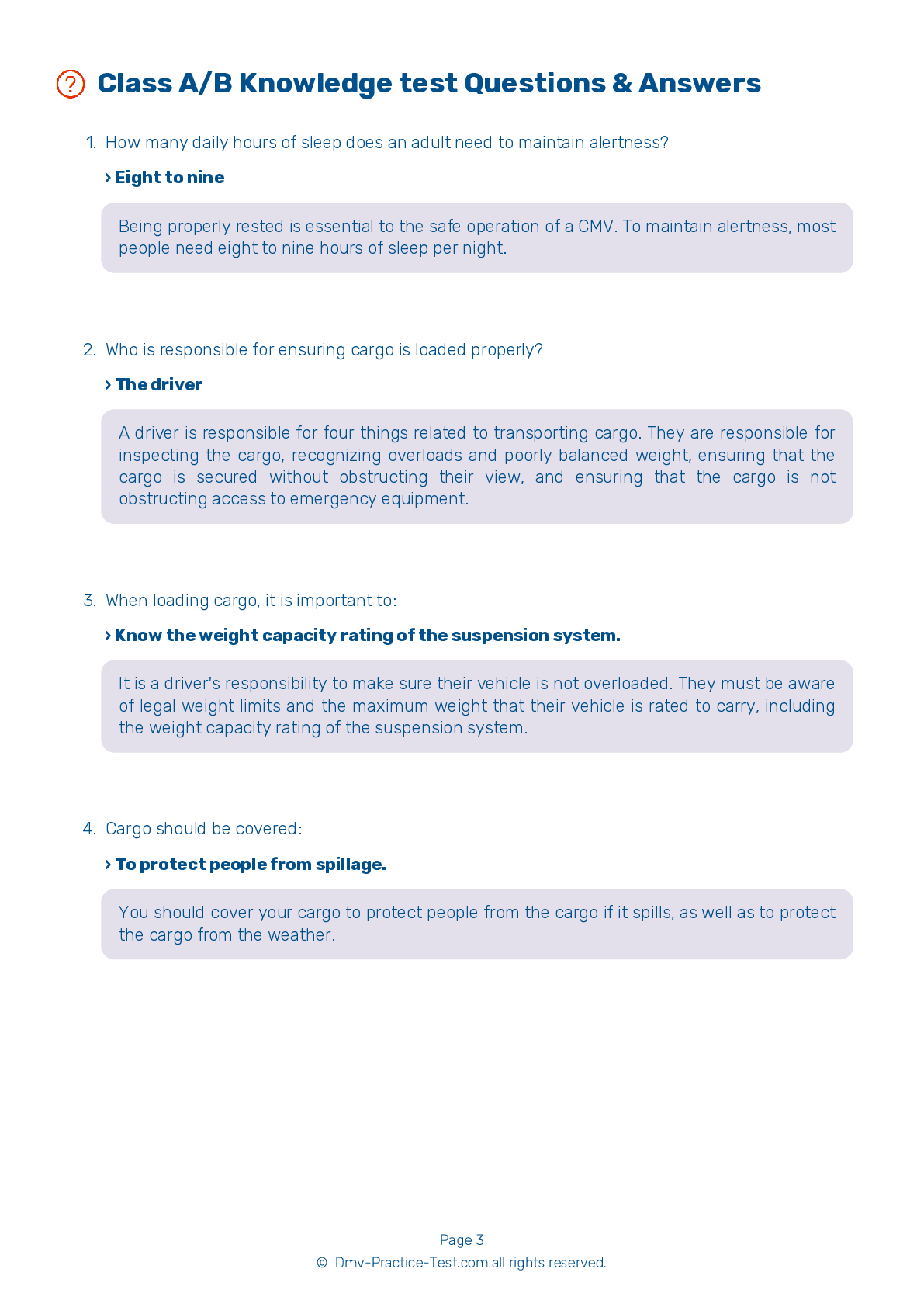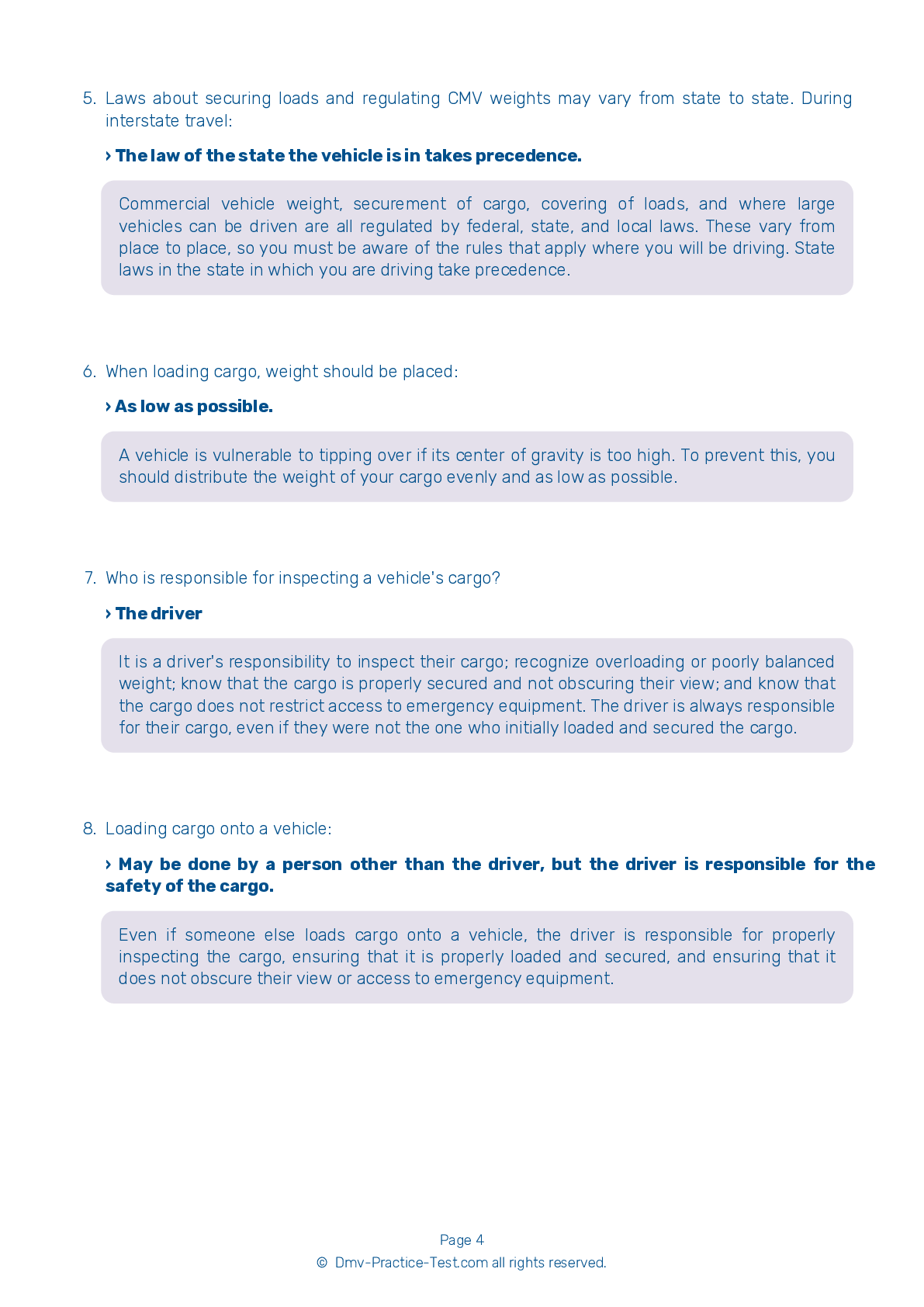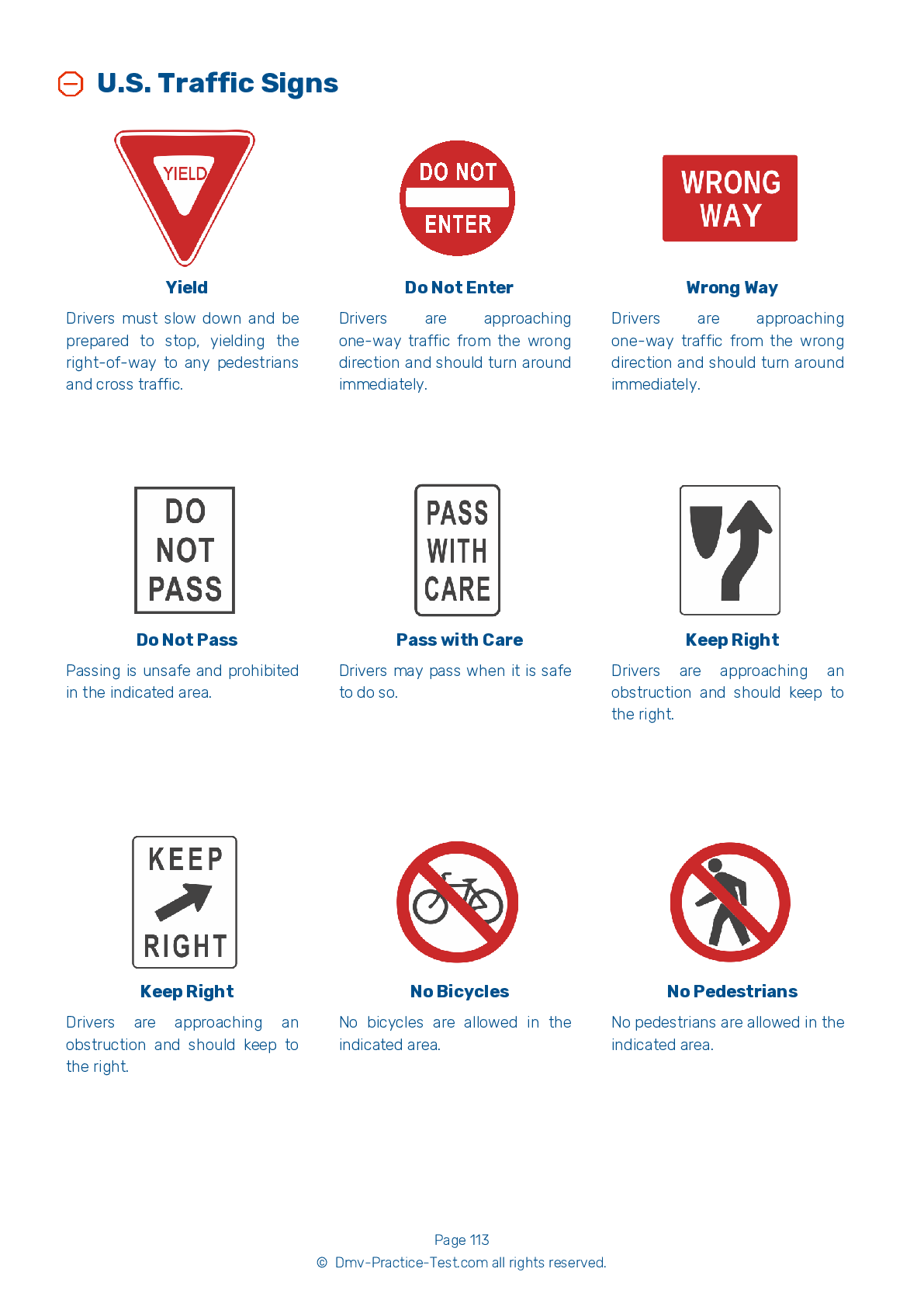Tank #1
Tank Endorsement Test | Rhode Island 2025 #1
Train for FREE with our Rhode Island tank endorsement practice test online. The official exam test consists of several obligatory parts, with all of them checking your knowledge of different blocks of road rules. If you need to obtain a RI tank license in 2025, practice as much as possible. Free sample tests published on our website will help you check and improve your knowledge and boost your grades. Please bear in mind that DMV requirements for issuing a CDL tank vehicle endorsement may vary from state to state.
20
16
20
1 . What should you do if your vehicle gets stuck on railroad tracks?
If your CMV gets stuck on railroad tracks, you should immediately leave the vehicle and get away from the tracks. Check the signposts or signal housing at the crossing for emergency contact information and call 911, or another appropriate emergency number.
2 . Shipping papers should be:
When transporting hazardous materials, shipping papers should be kept in a pouch in the driver's side door, or in another location where the driver is able to easily reach them while their seat belt is fastened. The papers must be easily visible to anyone who is entering the cab.
3 . When backing up your tractor while coupling it to a trailer, the trailer brakes should be:
Correctly following the steps to couple and uncouple trailers is vital to safely operating a combination vehicle. Before backing your tractor under the trailer while coupling, make sure your trailer brakes are locked.
4 . If the words "Inhalation Hazard" appear on shipping papers:
If the words "Inhalation Hazard" are on a package or its shipping paper, you must display the proper inhalation hazard placards, as well as any other necessary placards. This applies regardless of the amount of materials being carried.
5 . When trying to put out an electrical fire, you should:
B:C fire extinguishers are designed to work on electrical fires and burning liquids. Don't pour water on an electrical fire.
6 . If you are backing and the trailer begins to drift off-course, the driver should:
If your trailer begins to drift while you are backing, you should correct the drift immediately by turning the top of the steering wheel in the direction of the drift.
7 . If "Inhalation Hazard" appears on a shipping paper, the shipper should provide which placard?
If the words "Inhalation Hazard" appear on the shipping paper or package, you must display the "Poison Inhalation Hazard" or "Poison Gas" placards, as appropriate.
2025 Rhode Island | Frequently Asked Questions
A CDL Class B license in Rhode Island allows the holder to operate vehicles weighing more than 26,000 pounds, or towing a vehicle not exceeding 10,000 pounds. This includes buses, dump trucks, and straight trucks. The license requires passing both a written test and a skills test, including an on-road driving test.
A Class B CDL license in Rhode Island allows operation of single or combination vehicles where the single vehicle weighs over 26,000 pounds. This includes buses, dump trucks, tractor-trailers, tow trucks, cement mixers, and straight trucks. However, it does not allow the towing of a vehicle weighing over 10,000 pounds.
To acquire a Class B CDL license in Rhode Island, applicants must be at least 18 years old (21 for interstate driving), possess a valid non-commercial driver's license, and pass a medical examination. They must also pass a written knowledge test and a skills test, which includes vehicle inspection, basic controls, and on-road driving. Background checks may also be required.
To qualify for a Class B CDL license in Rhode Island, you must be at least 21 years old for interstate travel and 18 years old for intrastate travel. You should also hold a valid regular driver's license and pass both a written knowledge test and a skills test. A medical examination is also required to ensure you're physically fit to operate a commercial vehicle.
Specific endorsements are not necessary for a Class B CDL license in Rhode Island, but they can broaden your driving capabilities. For example, a passenger or school bus endorsement allows you to drive vehicles designed to carry 16 or more passengers, while a tank vehicle endorsement allows you to transport liquids or gases in a tank or tanks.
The Class B CDL skills assessment in Rhode Island includes three sections: pre-trip vehicle inspection, basic vehicle control, and on-road driving. The pre-trip inspection tests your ability to assess the condition of your vehicle. The basic vehicle control test assesses your maneuvering skills. The on-road test evaluates your ability to safely operate the vehicle in various traffic situations.
Class B CDL license holders in Rhode Island are limited to driving single or combination vehicles with a gross vehicle weight rating (GVWR) of 26,001 pounds or more, given that the GVWR of the vehicle(s) towed is not more than 10,000 pounds. They cannot operate Class A vehicles unless they have the correct endorsements and cannot transport hazardous materials without a HAZMAT endorsement.
Yes, in Rhode Island, the written Class B CDL test can be taken in languages other than English. However, the specific languages available may vary, so it's recommended to contact your local DMV office to confirm language options. Furthermore, federal regulations require all CDL holders to read and speak English adequately to converse with the general public and understand highway traffic signs and signals.
Yes, in Rhode Island, those with disabilities can request accommodations for the Class B CDL written exam. The specific accommodations depend on the nature of the disability. It's essential to contact the Rhode Island DMV ahead of time to discuss your needs and ensure that the appropriate accommodations are made for your testing session.
Yes, if you fail the Class B CDL written test in Rhode Island, you can retake it. However, you must wait until the next business day to do so. There is also a retesting fee that must be paid each time the test is retaken. It's recommended to study thoroughly before attempting the test again.



